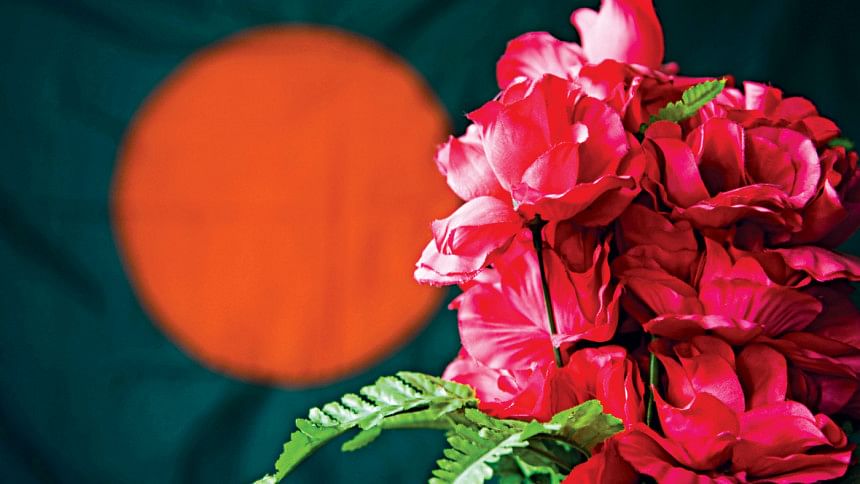The Bangladeshi kaleidoscope: What do certain colours mean to us?


How you connect with a colour largely depends on who you are: where you are from and what culture and country you belong to. And so, this makes us ask, what do different colours symbolise in Bangladesh, how do we perceive certain colours, and how do they relate to our national identity?
After all, colours often have meanings attached to them. You will be wearing black in funerals in some parts of the world, but in some others, you will be wearing white!
Let's do this then -- take some common hues and see what it means for us and how they reflect our culture and history!

What comes to mind when you think of red? Passion and love? Danger? Blood? Or perhaps a rising sun?
For Bangladeshis, it can evoke a sense of glory, uprising, and rebellion. Red reminds us of the bloodshed which our forefathers had to bear for the independence of this nation.
As the song goes, 'Purbo digonte, shurjo utheche, rokhto laal rokhto laal rokhto laal'.
And it is hard to imagine red without green, with the latter resonating with the rich vegetation of our beautiful country.
Red and green, together, has sealed our identity as a people. This set of colours is ubiquitous, from the national flag to fashionable attires and sports jerseys -- a nation united.
This is of course not the only colour duo we see in our culture. Black-and-white is common during International Mother Language Day. From saris and panjabis to even decor themes, the whole country seems to turn black-and-white in commemoration of Ekushey February -- a solemn remembrance of the martyrs of the Language Movement, a pride of the mother tongue, a celebration of languages -- all summarised in the black-and-white.
Just like various cultures can have different interpretations of a colour, different cultures can have different meanings for colour combinations too. To illustrate, black-and-white also brings about the iconic symbol of Yin and Yang philosophy that is popular in many countries.
Back to ours, another colour duo is the red-and-white, often seen in the attires donned during Pahela Baishakh. Although there are many variations of it, and indeed the colour spectrum to choose from is much broader, the 'shada-sari-laal-par' of the Bengali belle remains a classic.
Pahela Baishakh and Pahela Falgun celebrations brim with vivid colours. The mangal shobhajatra procession features colourful gigantic masks and replicas of animals, birds, etc. Women adorn their hands with coloured glass bangles. And the village fairs are a vibrant affair, with the colourful shokher hari and the delightful pink candyfloss and the myriad toys and dolls and so on.

And then there are colours which in some way or the other became associated with certain aspects of our country. There is 'rupali ilish', the silvery glimmer of our favourite hilsa of which we have an endless fascination for. Meanwhile, there is of course the 'golden fibre', referring to jute, owing to the golden hue of its fibre and arguably the added metaphorical connotation of prosperity of our nation associated with this agricultural produce.
Colour association can also hold a personal place in our minds, going deeper than culture and countries. It is a place built with experiences, memories, and interests of an individual -- but then again, those memories and interests are often shaped by the land you call your home.
So, when imagining yellow, my mind wonders off to the mesmerising vast mustard fields of my ancestral village-home. If I think of blue, the history buff in me prompts me to delve into the matter of indigo farming and the oppression of the colonial rulers. As I picture white, I see the cinematic excellence of the iconic train scene from Pather Panchali, where Satyajit Ray magically showed 'kash phool' and the vast skies and white fluffy clouds.
When it comes to white, I seldom think of snow. The colour blue has little association with melancholy for me. And my mustard fields are nothing like those yellow fields Van Gogh painted.
Indeed, thoughts and interpretations that come with particular colours are often shaped by the distinct flora and fauna and the unique history of the land. When commonly shared by a people, it defines what we hold dear and the things we ascribe value to and take pride in -- a spectrum portraying our national identity!
Photo: LS Archive/ Sazzad Ibne Sayed

 For all latest news, follow The Daily Star's Google News channel.
For all latest news, follow The Daily Star's Google News channel. 


Comments